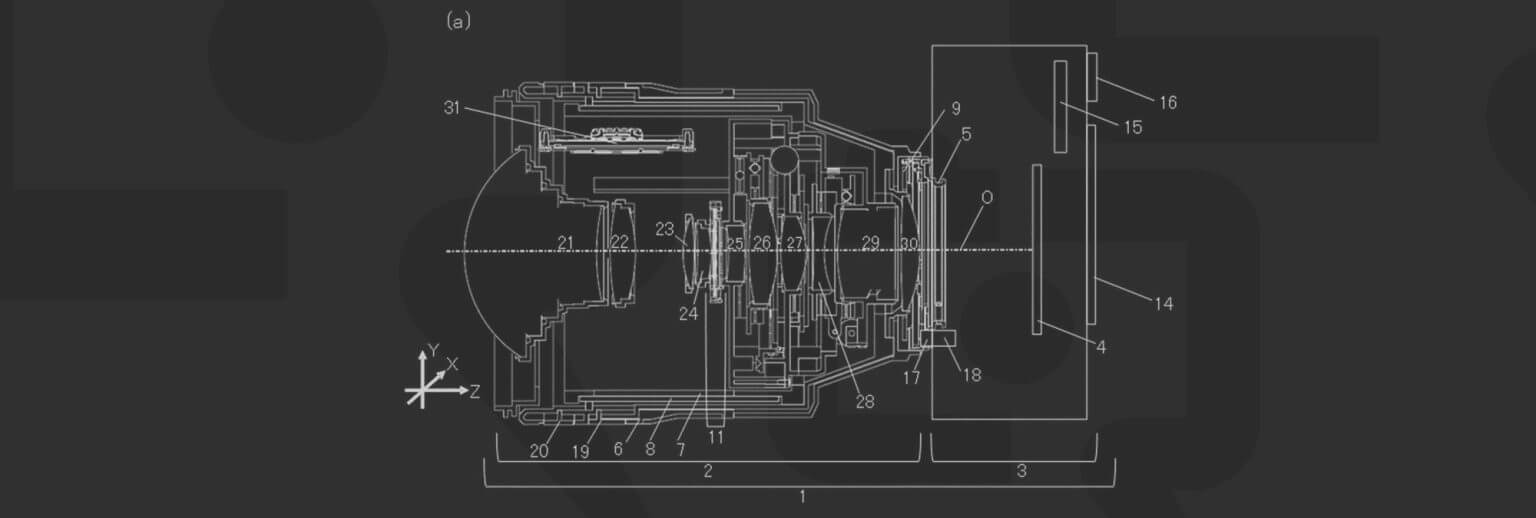In a long list of related patent applications, we have yet another patent application (2024-157119) one that deals with Canon’s ever-growing body of research into automatically controlled and camera-adjusted tilt-shift lenses. Sooner or later these things will come out because, at this stage, research continuing across multiple years and not coming out would be a strange way to waste money.
In case you haven’t been following along, these new tilt-shift lenses will allow a plethora of unheard-of functions, including being suitable for handheld operations, autofocus, and automatically adjusting the tilt to deliver the depth of focus necessary to achieve focus on the items you have selected.
In this patent application, Canon is exploring ways to optimize the user interface and the user experience when setting the tilt with the aperture setting (focusing range in machine translation).
Of the two mechanisms, tilt is the most difficult for users to wrap their minds around. Shift is simply perspective, while tilt changes the plane of focus orientation which is more difficult to perceive.
it is difficult to intuitively know how to move the imaging optical system to change the focus range, and it is necessary to move the optical system once, check the change in the focus range, and then change it to the desired focus range.
An object of the present invention is to provide a lens device capable of changing the focus range with a simple operation.
I think what’s important to note is that the hardware has been settled many many many many patent applications ago. Now, Canon is simply fine-tuning the user experience and making this easily the best tilt-shift lens/camera combination.
But as with all patent applications, this is a look into Canon’s research, and marketing is a funny thing, plans can change – so even with all this research, Canon may still pull the plug and go, yeah, naw, not going to do that.
We can hope though.
Japan Patent Application 2024-157119
|
When you purchase through links on our site, we may earn an affiliate commission. Here's how it works. |


I’d definitely buy some crazy RF mount autofocus T/S if they make it though.
It only took till post #4 for a gatekeeper to show up, albeit a more polite version than we usually get.
1) Make things simpler so more people can use tilt/shift
2) Make tilt/shift more capable, by automating the selection of the settings so that people doing set piece shots right now and run-and-gun with it. For instance, macro photographers selecting their focal planes.
I see a lot of value in both. I disagree with Dafrank that it's not useful for current users. I've tried to use my T/S lenses for semi-macro purposes in the past, as having deeper focal planes were more critical than magnification, but it was just too much of a hassle when taking many different compositions.
I also disagree with regarding the ease with which people can understand it how tilt/shift works. My day job is making software that deals with parabolic curve fitting. That's one of the reasons I was interested in tilt/shift. A while back, I was trying to make a table of tilt shift settings values for Canon lenses that went to an additional decimal point in anticipation of more precise lenses coming out (instead, we've gotten more patent filings). It was my excuse to get into it and totally grok how it worked. I would estimate that of the 30 percent of people capable of understanding how it really works, roughly 10 percent of those would have the patience to bother learning it without someone putting a gun to their heads.
I suspect from Canon's perspective, putting automation into it likely will multiply its sales of T/S lenses. I can't wait for them to come out - which has been true for a bunch of years now.
17mm / 24mm for shift for architecture/real estate and landscape (mountains etc)
90mm for macro/close up product using tilt and shift eg watches etc.
What would you use 50mm for?
f2.8/f3.5/f4 ie wide aperture would seem not to be needed for use cases above ie max depth of field would be more important wth focus stacking.
I have the older EF set. I find that in looking back on my own usage, about half of the time I needed one, it was an unanticipatable use case. Essentially, weird focus planes can be needed in all sorts of situations, but no one of them quite makes a general "use case."
Specifically to your question, here are some uses where I absolutely needed the 45mm t/s...
- Photographing recycled flooring wood grain on a (dirty) bathroom floor for a forestry magazine
- Catching wading birds on a mudflat from across a creek using a remote trigger, unable to slew the camera
- Catching burrowing bees coming in and out of their holes in sandy ground
In all of those cases the wider or more telephoto versions wouldn't work well. If you were to generalize the 50's use case (for me), I'd say it was needed for capturing unpredictable live subjects that can be attracted to a specific focal plane. I use it enough that when I take my larger camera case traveling somewhere, I take the 45mm as one of the lenses, but leave behind the wider and narrower focal lengths.